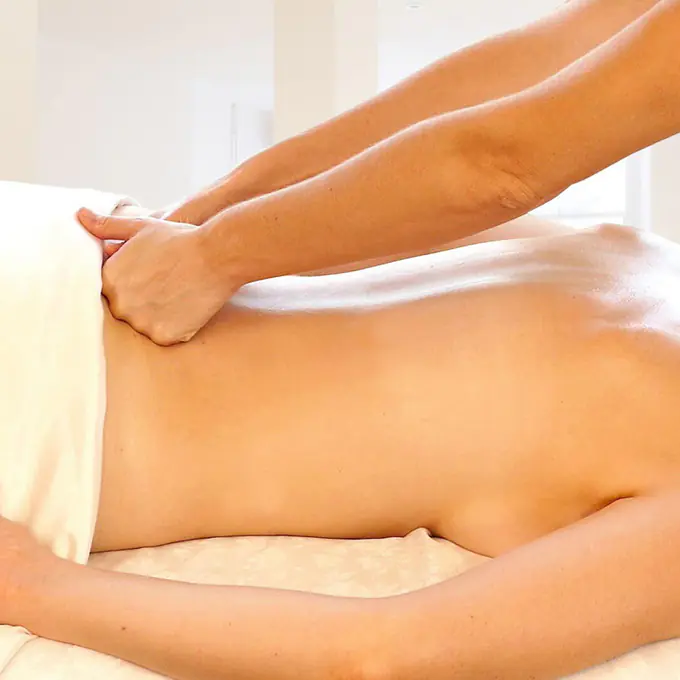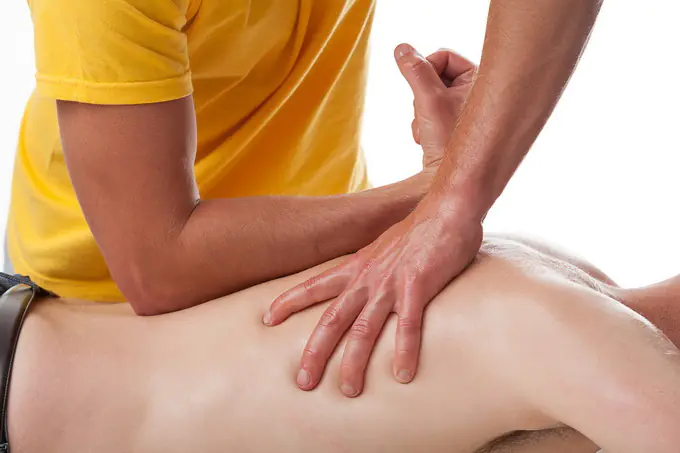Do you need a massage to soothe your tired muscles and relieve stress? If so, then you've probably come across the terms "Swedish massage" and "deep tissue massage." But what exactly are these two popular types of massage and which one is the right choice for you? In this detailed guide, we'll look at the differences between Swedish massage and deep tissue massage, helping you make an informed decision about which one suits your needs.
In today's fast-paced world, self-care has become more important than ever. Massage, once considered a luxury, has now become a popular way to relieve stress, relax and relieve muscle tension. Among the many massage options available, Swedish and deep tissue massage stand out as two of the most sought after options.

Both of these massage techniques have their own unique set of benefits, but they address different needs. To choose between a Swedish massage and a deep tissue massage, you need to understand what each entails and determine your specific requirements.
What is Swedish massage?
Swedish massage, often called "classical massage", is a gentle and relaxing form of massage therapy. This is a great choice for those who are new to massage or want to relieve stress and relax. Here are the key characteristics of Swedish massage:
- Technique: Swedish massage uses a combination of long gliding strokes, kneading, friction, tapping and gentle stretching. The pressure applied is usually light to moderate.
- Target: The main goal of Swedish massage is to induce relaxation and improve overall well-being. It is known for its calming effect on the body and mind.
- Advantages: Swedish massage promotes relaxation, relieves muscle tension, improves circulation, reduces stress and anxiety, and increases flexibility.
The essence of deep tissue massage
Deep tissue massage, on the other hand, is a more intense and targeted therapy that targets specific muscle groups and deep layers of muscle tissue. It is preferred by people with chronic pain or specific muscle problems. Here are the key characteristics of deep tissue massage:
- Technique: Deep tissue massage uses deep, firm pressure and slow strokes to reach the deeper layers of muscle and connective tissue. This may involve concentrated finger pressure on knots and areas of tension.
- Target: The primary goal of deep tissue massage is to relieve chronic muscle pain, relieve severe tension, and break up adhesions (bands of painful, stiff tissue) in muscles, tendons, and ligaments.
- Advantages: Deep tissue massage is effective in treating chronic pain conditions, improving posture, breaking up scar tissue, and increasing mobility.
Comparison of Swedish massage and deep tissue massage
To decide which massage is best for you, it is important to compare them based on your specific needs and preferences. Let's look at the differences:
- Pressure: Swedish massage uses gentle to moderate pressure, while deep tissue massage uses deep and firm pressure.
- Intensity: Swedish massage is gentle and relaxing, making it ideal for those seeking stress relief. Deep tissue massage is more intense and targets specific areas of pain and tension.
- Techniques: Swedish massage includes various relaxation techniques, while deep tissue massage focuses on working the deep muscles.
- Pain relief: If you have chronic pain or muscle tension, a deep tissue massage may be more effective. Swedish massage is better for overall relaxation.
How to make your own massage oil? We have the best recipes.
Read about kneading, the main technique in massage, in this article.
When to choose a Swedish massage and when to choose a deep one?
You should consider a Swedish massage if:
- You are new to massage and want a gentle introduction.
- You feel stressed, anxious or overwhelmed and need to relax.
- You prefer lighter touches and soothing strokes.
- Your main goal is to improve your overall well-being and reduce stress.
- When to Opt for Deep Tissue Massage
You should choose deep tissue massage if:
- You have chronic pain, muscle tension, or specific muscle problems.
- You are an athlete dealing with sports injuries.
- Do you prefer a more intense massage?
- You are looking for targeted pain relief and improved mobility.
What to expect during a Swedish massage?
During a Swedish massage session you can expect:
- Calm and serene environment with soft music and dim lighting.
- The therapist should use long sliding strokes and kneading techniques.
- Use massage oil or lotion to reduce skin friction.
- Full body massage that covers all major muscle groups.
- Feeling of relaxation and stress reduction during and after the massage.

What to expect during a deep tissue massage?
During a deep tissue massage session you can expect:
- A thorough assessment and discussion with your therapist about your specific concerns and areas of pain.
- The therapist should use deep, firm pressure and slow strokes to target problem areas.
- Intense pressure on nodes and areas of tension.
- Possible discomfort or “good pain” when the therapist works on the deeper layers of the muscles.
- Improved mobility and relief from chronic pain after the session.
Benefits of Swedish massage
Swedish massage offers a range of benefits, including:
- Stress reduction and relaxation.
- Blood circulation improves.
- Increased flexibility.
- Relieving muscle tension.
- Relief of anxiety and depression.
Benefits of Deep Tissue Massage
Deep tissue massage offers the following benefits:
- Pain relief.
- Reducing muscle tension.
- Improved posture.
- Rehabilitation after injuries.
- Stress relief.
- Improved range of motion.
- Destruction of scar tissue.
- Improved blood circulation.
- Removing toxins.
- Best sleep ever.
- Clarity of mind.
- Emotional release.
Frequently asked questions (FAQs)
#1: Is Deep Tissue Massage Painful?
No, it shouldn't hurt. Although you may experience some discomfort, your massage therapist will adjust the pressure according to your comfort level. Always communicate with your therapist to ensure you are comfortable.
#2: How often should I get a massage?
The frequency of massage depends on your individual needs and goals. Some people benefit from weekly sessions, while others find that a monthly massage is enough to maintain their health. Discuss your goals with your therapist to determine a schedule that works for you.
#3: Can I get a massage if I have health problems?
In most cases, yes, but it is important to tell your GP about any medical conditions or concerns you have. They can tailor the massage to suit your specific needs and ensure your safety.
#4: What is the difference between Swedish massage and deep tissue massage?
The main difference is the depth and pressure of the massage strokes. Swedish massage is gentler and more focused on relaxation, while deep tissue massage targets deeper layers of muscles and relieves chronic tension.



